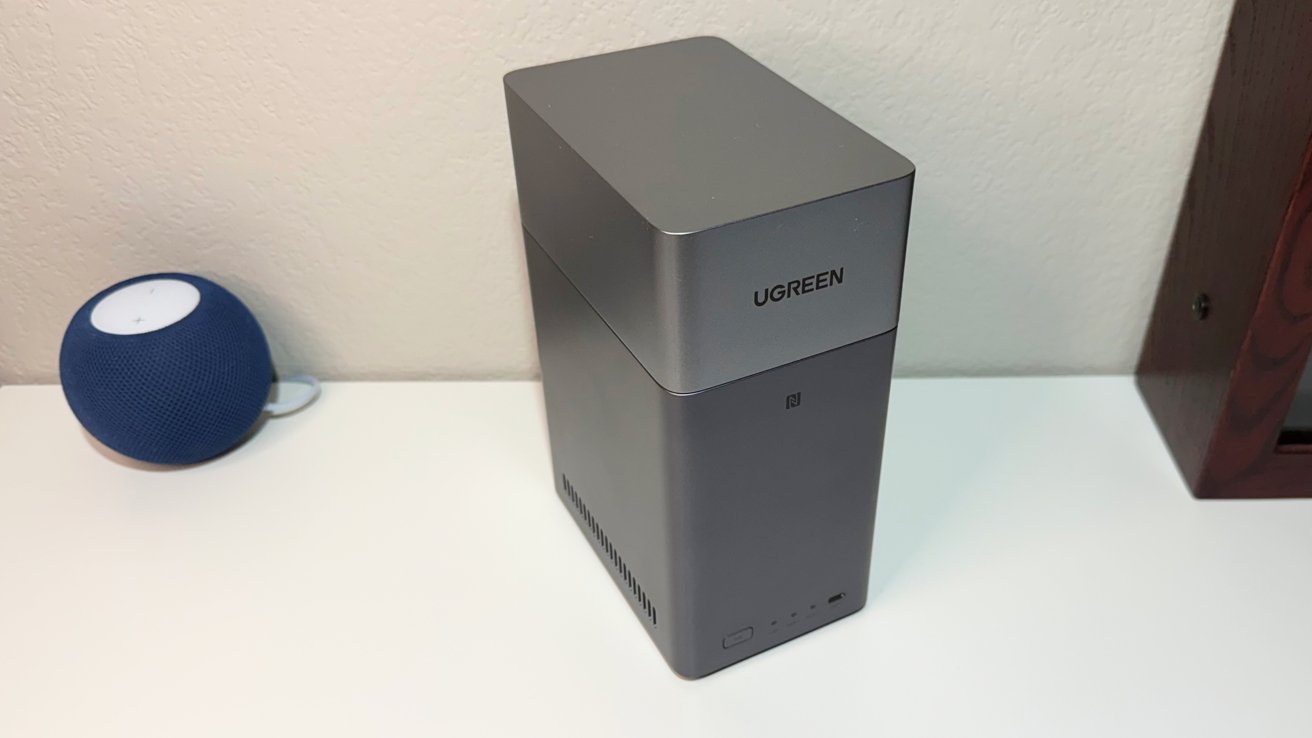In the era of digital data proliferation, managing and securing personal and professional files has become paramount. While cloud services like Google Drive and iCloud offer convenience, they often come with recurring costs and potential privacy concerns. Enter the Ugreen NASync DH2300, a network-attached storage (NAS) device designed to provide users with a personal, secure, and cost-effective data storage solution.
Design and Build Quality
The Ugreen NASync DH2300 boasts a sleek, minimalist design that seamlessly integrates into various environments, be it a home office or a professional workspace. Its compact form factor ensures it doesn’t occupy much space, making it suitable for users with limited desk real estate. The device’s chassis is constructed from durable materials, ensuring longevity and resistance to everyday wear and tear.
Setup and User Experience
One of the standout features of the DH2300 is its user-friendly setup process. Ugreen offers a dedicated mobile application that simplifies the initial configuration. Users can effortlessly connect the NAS to their network using the app, eliminating the often cumbersome traditional setup procedures. This streamlined approach is particularly beneficial for individuals new to NAS devices, ensuring a hassle-free experience from the outset.
Beyond the initial setup, the companion app serves as a central hub for managing the NAS. It provides a suite of functionalities, including file management, system monitoring, and access to various applications tailored for the device. The intuitive interface ensures that users can navigate and utilize the NAS’s features without a steep learning curve.
Operating System and Applications
The DH2300 operates on UGOS Pro, Ugreen’s proprietary operating system. While it may not offer the extensive feature set of more established NAS operating systems like Synology’s DSM, UGOS Pro is robust and user-friendly. It encompasses a range of management tools and applications, including:
– Photo Storage: A centralized repository for images, akin to Apple’s Photos app.
– Sync and Backup: Tools to synchronize and back up data across devices.
– Downloads: A utility for managing file downloads directly to the NAS.
– Theater: An application for organizing and viewing video content.
– Online Office: A suite for document creation and editing.
Notably, the Photo Storage app leverages artificial intelligence to enhance user experience. It can automatically generate albums based on facial recognition, facilitating organized photo libraries. Additionally, it offers optical character recognition (OCR) capabilities, allowing users to extract text from images—a feature particularly useful for digitizing printed documents.
For advanced users, the DH2300 supports Docker, enabling the deployment of containerized applications. However, given the device’s hardware limitations, particularly its processor and memory constraints, running resource-intensive Docker applications may not yield optimal performance.
Hardware Specifications
At the heart of the DH2300 is the Rockchip RK3576 processor, an octa-core chip comprising four high-performance cores and four efficiency cores. This configuration ensures a balance between performance and energy efficiency, making the NAS suitable for standard storage tasks and light application usage.
The device is equipped with 4GB of RAM, which, while adequate for basic operations, may pose limitations when running multiple applications or handling large datasets. It’s important to note that the memory is non-expandable, so users with more demanding requirements might find this restrictive.
On the graphics front, the integrated ARM G52 MC3 GPU is capable of decoding 8K video content, making the DH2300 a viable option for media enthusiasts. Additionally, the processor’s neural processing unit (NPU) delivers up to 6 trillion operations per second, facilitating on-device AI tasks such as facial recognition and OCR.
Connectivity and Ports
The DH2300 offers a selection of ports to cater to various connectivity needs:
– Front Panel: A USB-C port operating at USB 3.2 Gen 1 speeds (5Gbps), suitable for quick file transfers from external devices.
– Rear Panel:
– Two USB-A 3.2 Gen 1 ports for connecting peripherals or additional storage devices.
– A Gigabit Ethernet port for network connectivity.
– An HDMI port supporting 4K at 60Hz, allowing users to connect the NAS directly to a display for media playback or system management.
While the inclusion of a Gigabit Ethernet port aligns with the device’s target audience, some users might have appreciated the option for faster network interfaces, such as 2.5GbE. However, considering the device’s positioning as an entry-level NAS, the current port selection is reasonable.
Storage Capabilities
The DH2300 features two SATA drive bays, accessible by removing the top panel and sliding out the drive trays. Each bay can accommodate drives up to 30TB, allowing for a maximum raw storage capacity of 60TB. This capacity is ample for most home users and small businesses.
The device supports various RAID configurations:
– RAID 0: Data is striped across both drives, enhancing performance but lacking redundancy.
– RAID 1: Data is mirrored between the two drives, providing redundancy at the cost of halved storage capacity.
– Basic and JBOD: Options for using the drives independently or as a single concatenated volume.
It’s worth noting that the DH2300 does not support M.2 or NVMe expansion, which could have offered faster storage options or caching capabilities. However, given the device’s intended market segment, this omission is understandable.
For system operations and applications, the NAS includes 32GB of eMMC storage, ensuring that user data remains separate from system files.
Security and Data Protection
Security is a critical aspect of any storage solution. The DH2300 employs encryption protocols such as TLS/SSL, RSA, and AES to safeguard data during transmission and storage. These measures ensure that user data remains protected from unauthorized access.
Additionally, the NAS supports Apple’s Time Machine, allowing Mac users to set up automated backups seamlessly. While the setup process may require some manual configuration, Ugreen provides comprehensive guides to assist users in this regard.
Performance and Limitations
In real-world usage, the DH2300 performs admirably for standard NAS tasks, including file storage, media streaming, and basic application hosting. However, users should be aware of its limitations:
– Processing Power: While sufficient for basic tasks, the processor may struggle with more demanding applications or multiple concurrent processes.
– Memory Constraints: The fixed 4GB RAM can become a bottleneck when running multiple applications or handling large datasets.
– Network Speed: The Gigabit Ethernet port limits network transfer speeds to 1Gbps, which may be a constraint for users with faster network infrastructures.
Conclusion
The Ugreen NASync DH2300 presents itself as a compelling entry-level NAS solution, particularly suited for users seeking an alternative to cloud storage services. Its user-friendly setup, robust security features, and adequate performance make it a viable option for home users and small businesses. However, users with more demanding requirements or those seeking advanced features may need to consider higher-end models.



